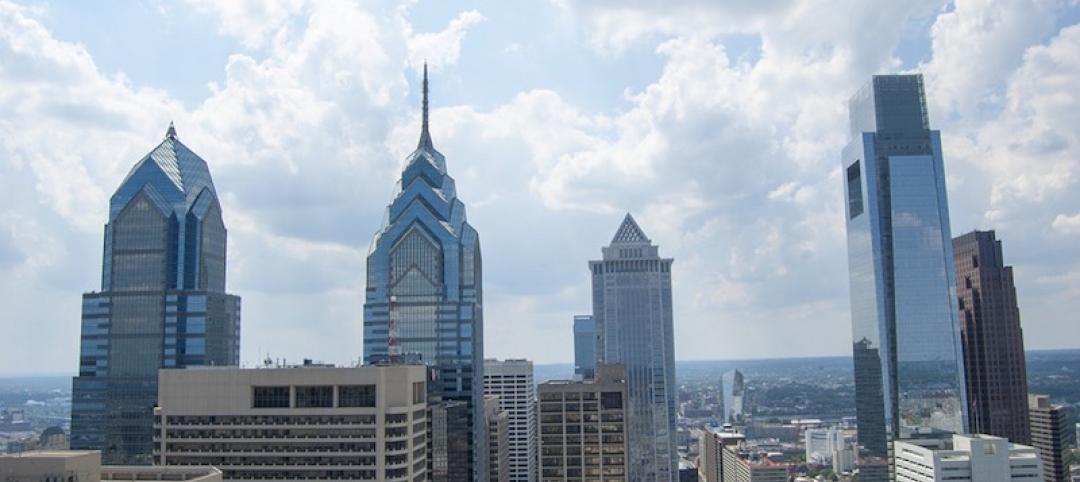Mitsubishi Electric Corp announced the overview of its ultra-high-speed elevator developed for the 632-meter Shanghai Tower under construction in Shanghai, China.
For the traction motor of the elevator, Mitsubishi Electric employed a parallel drive system that uses two three-phase winding coils for each motor and controls the two three-phases with two control panels. By using two compact control panels, the company enabled to design the layout of a machinery room more freely while increasing output power. The operation of the elevator is scheduled to begin in 2014.
To realize the world's fastest speed of 1,080 m per minute, Mitsubishi Electric used new technologies for higher safety, lifting height and comfort as well as for the motor for the winch. Specifically, to enhance safety, the company employed a two-tiered brake (the company's former product has a one-tiered brake) for emergency stop and used fine ceramic with a heat resistance of up to about 1,000°C for the brake shoe.
The buffer (shock absorber) at the bottom of the elevator shaft is comprised of three tiers (the former product has a one-tiered butter) and has a stroke of 7.3 meters, which is about 30% shorter than the stroke of the former product's buffer.
For the "sfleX-rope," a rope for the winch, Mitsubishi Electric employed a new structure so that it can hold a greater weight of a longer rope. The company improved the density of the rope by using a concentric-layered steel wire and filled the gap between the layers with plastic.
As a result, the company increased breaking load by 85% while increasing mass per unit length only by 18%. The new rope is less extensible. So, when people get in the elevator, it does not shake vertically much.
This time, Mitsubishi Electric newly developed a control cable that is 20% lighter than the one used for the former product.
For the comfort, the new elevator is equipped with the "active roller guide," which detects vibration and applies anti-phase vibration to it so that the vibration of the car is reduced. While two units of the active roller guide are installed in the bottom of the former product, Mitsubishi Electric added two more to the upper side of the new elevator because a different type of vibration is applied to the new product when it is moving at an ultra-high speed. As a result, vibration was reduced to about 1/3 that of the former product.
Furthermore, the new elevator is equipped with a streamlined aerodynamic car cover that reduces air resistance as well as an air pressure control device consisting of an air blower, a duct and a box for switching between air intake and emission. As a result, rapid changes in atmospheric pressure can be prevented, reducing passengers' feeling of fullness in the ear. BD+C
Related Stories
Architects | Jan 26, 2017
Alan Greenberger, FAIA, honored with the 2017 AIA Thomas Jefferson Award
The award honors significant contributions to public architecture.
Architects | Jan 24, 2017
Politicians use architectural renderings in bid to sell Chicago’s Thompson Center
The renderings are meant to show the potential of the site located in the heart of the Chicago Loop.
Architects | Jan 23, 2017
Why corporate branded environments matter
A branded environment has the potential to create a long-lasting impression for your intended audiences.
Architects | Jan 19, 2017
Harley Ellis Devereaux merges with Deems Lewis McKinley
The combination is expected to bolster HED’s presence in northern California and the K-12 sector.
Architects | Jan 13, 2017
Best in Architecture: 23 projects win AIA 2017 Institute Honor Awards
The Shigeru Ban-designed Aspen Art Museum and the General Motors Design Auditorium by SmithGroupJJR are among the architecture, interior architecture, and urban design projects to win.
Designers | Jan 13, 2017
The mind’s eye: Five thoughts on cognitive neuroscience and designing spaces
Measuring how the human mind responds to buildings could improve design.
Building Materials | Jan 9, 2017
Architects and researchers are developing new techniques for building in space
As setting foot on Mars becomes a more realistic goal, the search for how to best develop Architecture for the Red Planet is heating up.
Architects | Jan 5, 2017
U.S. architects can now earn licenses to practice Down Under
NCARB finalizes reciprocal agreement with Australia and New Zealand.
Architects | Jan 4, 2017
The making of visible experts: A path for seller-doers in the AEC industry
Exceptional seller-doers have the ability to ask the right questions, and more importantly, listen.
Building Team | Jan 3, 2017
How does your firm’s hit rate stack up to the AEC competition?
If your firm is not converting at least a third of project proposals when competing for new work, it may be time to reassess your marketing tactics and processes.

















